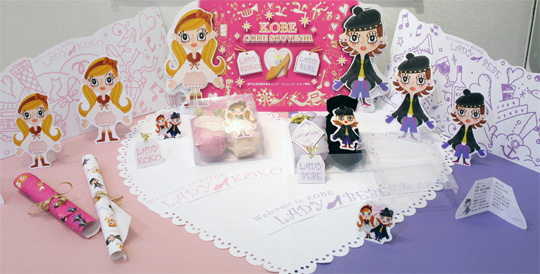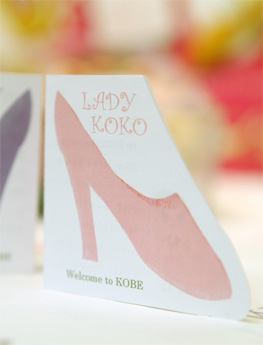

This merchandise evokes the image of shoes made in Kobe, a place described as “haki-daore no machi” (“a town that loves spending money on shoes”). Keywords that describe Kobe include “kirei“ (“beautiful”), “sea,” ”fashion,” “sweets,” and “night view.” Among such concepts, Kobe is best remembered as a city of “fashion.” For this reason, we sought to make something fashionable. Choices of clothes and fashion accessories depend largely on individual preferences, and thus we thought that such items would not be suitable for souvenirs. After repeated discussions on what kind of merchandise would look fashionable and attract a wide range of shoppers, we decided to propose a shoe sachet. This key item is a stylish “must have” that provides a fashionable ambiance even at home. Stylish lifestyles begin with footwear. Traditionally, Kobe has had a culture that places a great deal of importance on shoes. Therefore, for the fashionable city of Kobe, it will be a waste not to focus on shoes. In addition, we decided to set up characters that would evoke the keyword “oshare” (“fashionable”) in order to distinguish our merchandise from other similar products. Specifically, we created two different character mascots, “Lady Koko” and “”Lady Bebe,” using the letters of the city name (“Ko-be”). By establishing these two completely different character mascots, we can attract shoppers of different types and also appeal to the minds of collectors who are interested in collecting things rather than merely picking their favorite. The merchandise offers variations in usage, which allow users to create their own arrangements in flexible ways, including using as a pouch or character mascot alone. As a source of fragrance, we selected lavender grown at a worksite in Kobe, aiming to create profits for this establishment.
Kobe Yamate College: Shigeko Doi
I can say that the project had a profound educational effect on students.
Of particular note are the following three points.
(1) Students had opportunities to interact with society before entering the workforce, and had a simulated experience in learning the basics about how to work and develop communication skills as members of society while they proceeded with the project.
· Importance of reporting, communication, and consultation
· Importance of due dates
· Prior consultation and follow-up (importance of courtesies)
· Difficulty of building trust
(2) Students improved in terms of the ability to organize and make a logical presentation, as well as the writing skills necessary to submit assignments.
(3) Students became interested in manufacturing while leaning about the histories of products.
As in Nagoya, an interim presentation meeting was held in Kobe, where we received comments from professional coordinators to suggest modifications in some cases, observed how things were going with other teams, and deepened student exchange. Reports about the interim presentation meeting in Nagoya, if any can be provided, would be of great use. It would also be helpful if students could be given a period of one year to work on a project.